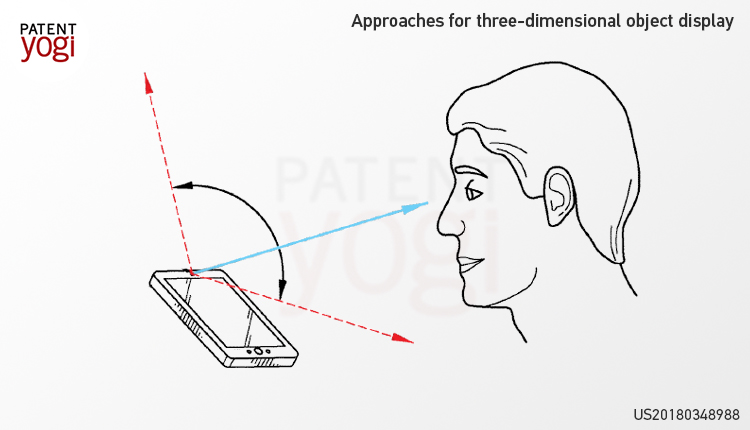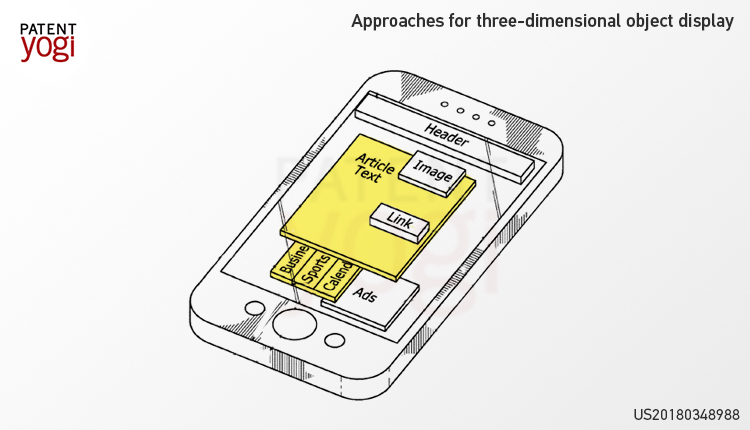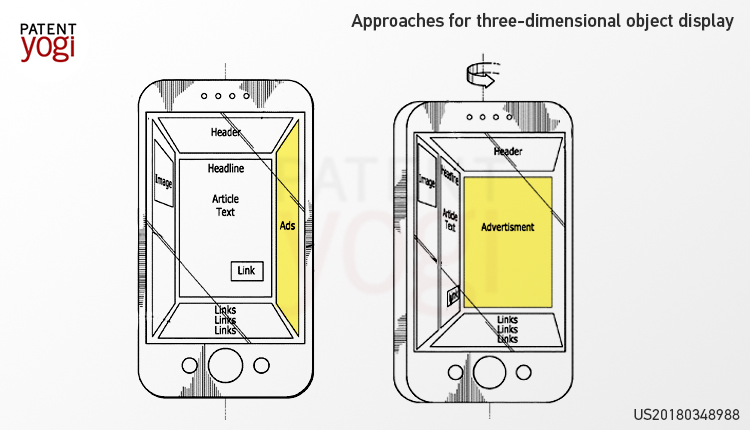Surfing the internet can be real fun. You can reach to a whole new world with just a few taps on your smartphone’s screen. However, locating a desired content over the internet (or even on a webpage) can be really difficult. The webpages usually include a plethora of information that is useless most of the time and covering a majority of your smartphone’s screen space. For example, advertisements, every so often, can take a significant screen space on your smartphone or sometimes can even cover the entire screen of your smartphone leaving only a tiny space for you to consume any useful content.
However, with a new patented technology from Amazon, you will be able to interact with webpages on your smartphone in a more personal way. A two-dimensional (2D) screen of your smartphone will be converted into a three-dimensional (3D) interface where the content of the webpages on your smartphone’s screen will appear to be real objects. Further, the 3D interface for web-browsing will be truly captivating as it allows you to explore the webpage in a more intuitive way (such as by tilting or rotating your phone) rather than just scrolling a webpage up or down for exploring the webpage. In other words, the internet will be converted from a textbook with 2D pages in to a video game with cool 3D interfaces.
PATENTED TECHNOLOGY


Brief overview:
As per the patented technology, a webpage on your smartphone’s screen will be converted into the 3D interface (as shown in figure 1 above) with different contents (such as links, advertisements, article text etc.) of the webpage to appear with different heights and depths. Further, the 3D interface of the webpage will change according to an orientation of the smartphone with respect your line of sight (as represented with figure 2 above).
Technical details:

You can enable a 3D view mode on your smartphone by tilting, shaking, or even squeezing your smartphone in order to convert a 2D webpage into a 3D interface. When your smartphone operates in the 3D view mode, one or more elements (such as links, advertisements, article text etc.) of the webpage will be caused to appear to be positioned and/or displayed in 3D space in different heights. The height of each element relates to what content you are most interested in. For example, the most important part of an article can be raised so it is the largest and easiest to read. Less important content can be moved backward in 3D space. For example, advertisements can appear recessed from the display screen. Further, in order to realize which content to be shown with what height or depth on the webpage, the 3D interface will use your user profile data. Your user profile data includes information such as your browsing history or other user-based preference information. Further, tilting your smartphone will allow you to see some additional content such as a link for sports, business, and a calendar page that may be stacked below the main article text (as shown in figure 3 above). The 3D interface uses sensor data to provide such interface. Further, the sensor data may include data sensed by sensors such as a camera sensor, motion sensor, location sensor etc. that is embedded within the smartphone.

Further, to improve readability, appearance, and/or access to the content, the webpage can be converted into a virtual room (as shown in figure 4 above) where the content is distributed on multiple walls of the virtual room. Further, as a user of the smartphone tilts, rotates, translates, flicks, or otherwise changes a relative orientation of the smartphone, a display of the content will be adjusted to provide a view of a different one of the walls. For example, when the user rotates the smartphone counterclockwise around an axis (as shown in FIG. 4B above), the rotation of the smartphone will cause the content displayed to shift accordingly (e.g., a wall that includes advertisement will appear). In this way, the user will focus on one wall or surface at a time and can shift the content into focus with a movement of the device.
WHAT IS YOUR TAKE?
So what do you think about this Patented technology by Amazon? Let us know in the comment section.
Publication Number: US20180348988A1
Patent Title: Approaches for three-dimensional object display
Publication date: 2018-12-06
Filing date: 2018-08-13
Inventors: Amazon Technologies Inc
Assignee: Charley Ames, Dennis Pilarinos, Peter Frank Hill, Sasha Mikhael Perez, Timothy Thomas Gray


